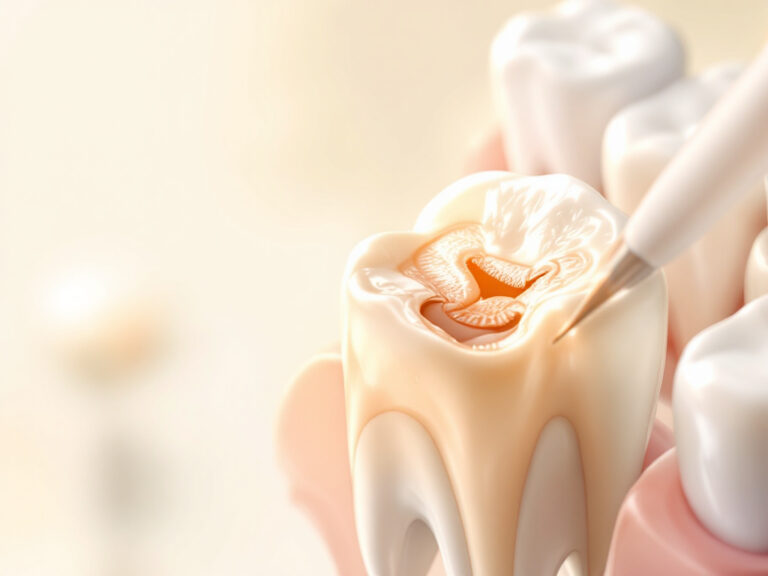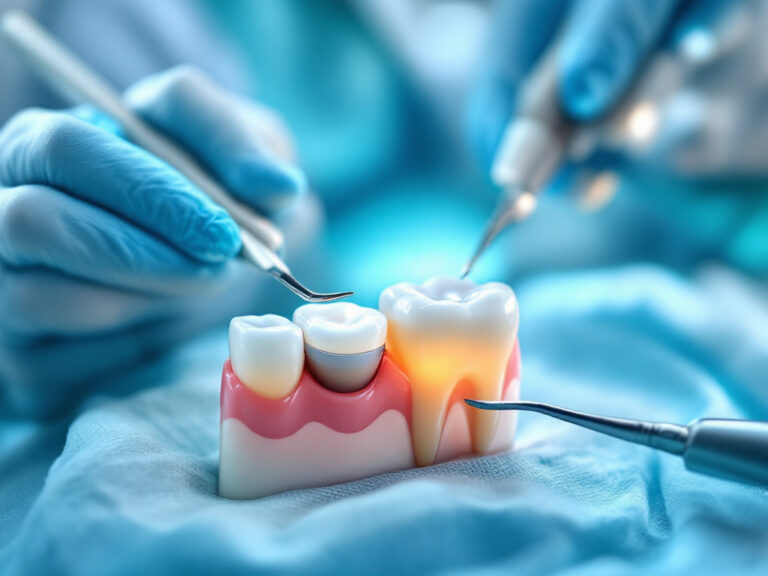You want a gentle root canal treatment that eases discomfort, preserves your tooth’s strength, and restores long-term oral function. By choosing minimally invasive techniques—like the GentleWave® Procedure—you can feel confident that your root canal therapy addresses infection thoroughly while reducing post-op pain and healing time. In this guide you’ll learn about gentle root canal treatment options, how they compare to standard methods, what to expect during and after your procedure, and how to plan effective restorations afterward. If you’re ready to explore your options, our root canal therapy services can help match you with the right solution.
Gentle root canal treatment
Gentle root canal treatment focuses on eliminating infection deep within the tooth while preserving as much natural structure as possible. Instead of relying solely on rigid files and manual irrigation, advanced alternatives use fluid dynamics, acoustic energy, or specialized cleaning protocols. These methods reach microscopic crevices of the canal system, removing bacteria and debris more completely than traditional approaches. As a result, you benefit from:
- Reduced instrumentation in the canal
- Minimized removal of healthy dentin
- Lower incidence of post-treatment pain
- Faster overall healing and return to normal activities
By preserving more of your natural tooth structure, gentle approaches help you maintain long-term oral function and avoid complications like brittleness or fracture. For many patients, this also means fewer appointments and more comfort during treatment.
Standard root canal therapy
Traditional root canal therapy (RCT) has successfully relieved pulpitis and abscesses since the 19th century. It typically involves:
- Accessing the pulp chamber with a drill
- Manually cleaning canals with metal files and treatment fluids
- Flushing the system to remove debris
- Filling and sealing the cleaned canals
While standard RCT remains effective, its limitations include difficulty reaching all canal microstructures and potential for post-op discomfort. Standard methods may leave small pockets of infected tissue behind, which can contribute to reinfection over time [1]. Additionally, treatment often spans two appointments, and teeth tend to become more brittle once the nourishing pulp is removed.
GentleWave procedure benefits
The GentleWave® Procedure is a state-of-the-art alternative to standard RCT. It uses multisonic ultracleaning technology—a powerful combination of specialized fluids and acoustic energy—to access and disinfect the most complex portions of the canal system. Key benefits include:
- Single-session completion for over 92% of patients [2]
- 96.6% of patients report mild to no pain afterward [2]
- Preservation of dentin and natural tooth integrity, reducing brittleness
- Negative pressure at the root end to contain fluids and prevent tissue irritation [2]
- Exceptionally thorough cleaning of microscopic spaces unreachable by files [3]
- Faster healing times and minimal tissue trauma, so you can resume normal activities quickly [4]
Patients describe the GentleWave experience as “quick, easy, and comfortable,” especially in complex cases where standard files struggle. If you’re seeking a gentle root canal treatment that maximizes cleanliness and comfort, this advanced procedure is worth considering.
Treatment procedure overview
Whether you choose a traditional approach or an advanced system like GentleWave, here’s what to expect during your root canal treatment:
- Consultation and imaging
- Your dentist reviews X-rays or CBCT scans to assess infection and canal anatomy.
- Local anesthesia
- Numbing ensures you remain comfortable throughout the procedure.
- Access preparation
- A small opening is made in the tooth’s crown to reach the pulp chamber.
- Cleaning and disinfection
- Traditional RCT uses files and flushing solutions; gentle options use acoustic energy or advanced fluids.
- Obturation
- Canals are filled with biocompatible material and sealed to prevent reinfection.
- Temporary filling
- A provisional restoration protects the tooth until your final restoration.
- Final restoration
- You’ll return for a crown, onlay, or other restoration to restore strength and function.
Your dentist will guide you through each step, tailoring the protocol to your tooth’s unique anatomy. If you opt for same-day restorations—like CEREC crowns—your final restoration may be placed immediately, saving you multiple visits and helping you regain full chewing ability sooner.
Potential risks and side effects
Most patients experience only mild symptoms after a root canal as tissues heal. Typical side effects include:
- Tenderness or mild pain around the treated tooth for 3–7 days [5]
- Slight swelling or inflammation that resolves within a week
- Sinus congestion or headache when upper molars are involved, clearing in a few weeks [6]
- Tooth discoloration in rare cases, treatable with crowns or veneers [6]
Uncommon complications may include:
- Reinfection if a canal is missed or sealed improperly [6]
- Brittleness of root-canal treated teeth, often managed with crowns
- Temporary numbness if nearby nerves are affected, usually resolving in weeks
- Allergic reaction to anesthesia in sensitive individuals
Choosing a gentle root canal treatment like the GentleWave Procedure can reduce many of these risks by cleaning canals more thoroughly, preserving dentin, and minimizing trauma.
Recovery and aftercare tips
To support healing and protect your tooth after root canal treatment, follow these steps:
- Avoid chewing hard or sticky foods on the treated side until the final restoration is in place
- Maintain excellent oral hygiene—brush gently and floss daily
- Rinse with a warm saltwater solution if you experience mild inflammation
- Take over-the-counter pain relievers as recommended by your dentist
- Schedule any follow-up appointments promptly if discomfort worsens or persists beyond a week
- Abstain from smoking, which can impair healing
If you notice severe pain, swelling, or discharge, contact your dentist right away. Good aftercare helps you reduce complications and preserve your tooth’s health long term.
Restorations after root canal
After your root canal, restoring the tooth is vital to prevent fracture and restore chewing strength. Here’s a comparison of common post-RCT restorations:
| Restoration type | Description | Timing |
|---|---|---|
| Dental crown | Full-coverage cap that reinforces tooth structure | Same-day crowns available with CEREC technology dental crown placement |
| Porcelain crown | Highly aesthetic, matches natural tooth color | Requires lab fabrication porcelain crown restoration |
| Porcelain inlay/onlay | Conservative partial coverage to preserve healthy enamel | Onlay placed in one or two visits porcelain inlay and onlay treatment |
| Dental bridge | Replaces adjacent missing tooth using crowns | Follows crown prep schedule dental bridge replacement |
| Dental implant | Permanent solution anchored in jawbone | Consult for planning dental implant consultation |
For teeth that require more extensive support, you may also consider a full mouth restoration program. Your dentist will recommend the option that best aligns with your oral health goals, budget, and timeline.
Choosing your provider
Selecting an experienced provider ensures you receive the best gentle root canal treatment possible. Look for:
- Certification in advanced techniques, like the GentleWave® System [7]
- Use of modern equipment—digital imaging, CBCT, same-day crown mills
- Clear communication about procedure steps, risks, and costs
- A comfortable environment that prioritizes your anxiety management and pain control
- Positive patient reviews noting efficiency and minimal discomfort
When scheduling your appointment, ask specifically for a GentleWave Provider if you’re interested in that approach. You can find local specialists using the GentleWave Provider Locator.
Plan your treatment
Your smile and oral function deserve the best care. To get started:
- Book a consultation with an endodontist or restorative dentist experienced in gentle root canal treatment.
- Review imaging and discuss whether standard RCT or an advanced option like GentleWave fits your case.
- Explore restoration plans—crowns, inlays, bridges, or implants—and confirm any same-day options.
- Verify insurance coverage or ask about financing through insurance covered dental restoration or affordable restorative dentistry.
By combining minimally invasive disinfection with high-quality restorations, you can confidently restore your oral health, maintain long-term function, and enjoy a pain-free recovery. Contact us today to learn how gentle root canal treatment can save your tooth and protect your smile.







